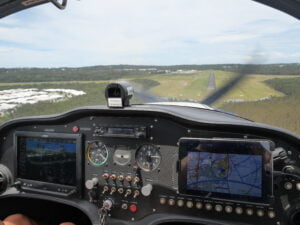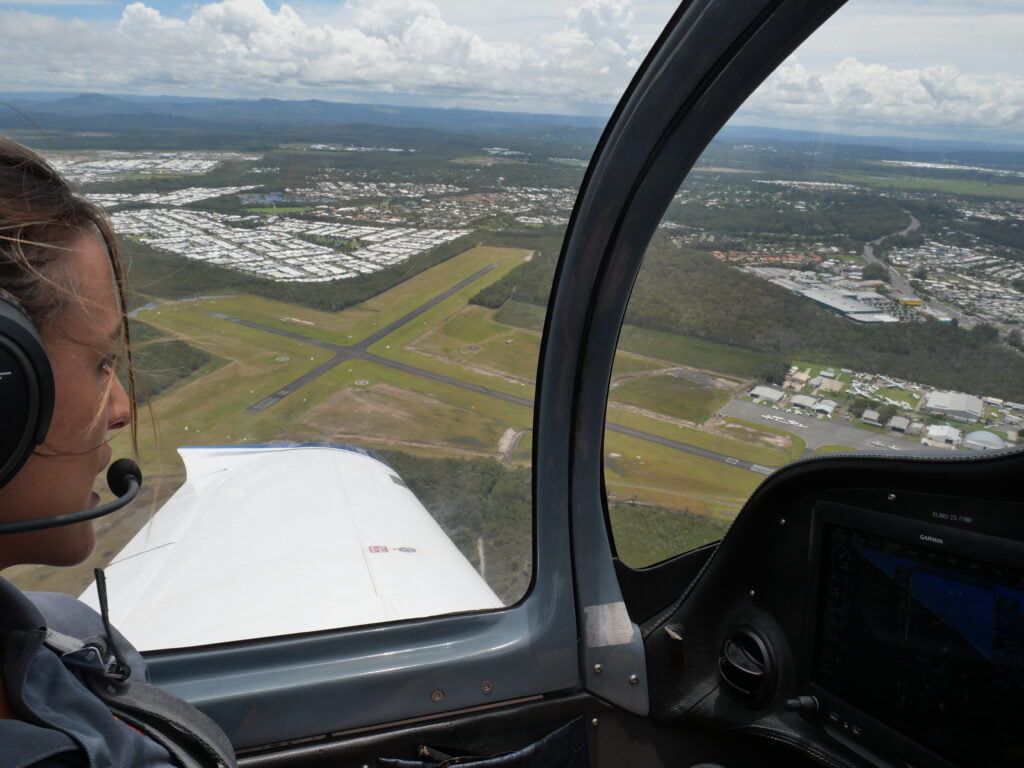Learning to land an aircraft is hard

When someone asks me: ‘Is it hard to teach someone how to land an aircraft?’, my response is always, ‘Landing an aircraft once you have mastered flying is not that hard, however, learning to land an aircraft ‘well’ and consistently safely, is hard and takes time, perseverance and patience – for both the student and instructor’.
I often joke that most flight schools would not be profitable if learning how to land an aircraft was easy. And if it was easy, it would not lead to such a great feeling of achievement once you have learnt how to land.
Notice how I did not use the term ‘master how to land’’. A pilot is always trying to master the landing and even with lots of experience a great landing can still be hard to achieve.
Teaching someone how to land takes, on average, anywhere from five to fifteen hours of circuit training before they are safe and competent enough to achieve their first solo flight.
What is a missed approach?

During the student’s circuit training the student is taught how to conduct what is known as a ‘missed approach’ which is also known as a ‘go around’.
A missed approach is where the pilot elects not to land at some point on final approach, then initiates full power and climbs back to the circuit height to conduct another circuit and approaches to try and land again.
A missed approach is conducted for many reasons, and some of these reasons are:
- The approach is not stable (i.e. the pilot has not sustained a constant approach speed, vertical speed and/or power setting)
- The pilot balloons or bounces when landing
- The pilot encounters severe turbulence on the final approach
- The cross wind exceeds the aircraft or pilot’s capabilities
- The pilot encounters birds or an animal on the runway
- Another aircraft has not cleared the runway prior to landing
The most common student errors when landing are listed below.
- Ballooning
Ballooning is where the pilot pulls back too much on the control column and so starts to gently climb again just prior to touch down. If the student tries to land after a balloon, there is a chance the aircraft could stall close to the ground and the nosewheel could impact first (in a tricycle aircraft) causing damage to the aircraft.
- Bouncing
Sometimes a student lands too fast, or too flat and hard, and the aircraft bounces back into the air. Just like ballooning, the aircraft can run out of energy and airspeed quickly and stall close to the ground. Also if the student tries to land again they may inadvertently contact the nose wheel first (in a tricycle aircraft) and damage the aircraft.
- Not maintaining direction control or not landing on the centre of the runway
Sometimes students will land with the aircraft not being straight and parallel with the runway, and this can cause damage to the tyres and/or undercarriage. Or they might land off to one side of the runway with the potential to go off the runway.
Why pilots don’t conduct a missed approach
An obvious question to ask is, ‘Why don’t student pilots and experienced pilots conduct a missed approach when the approach or landing is falling outside the safe parameters for a landing?’
I find that the main reasons students pilot do not go around is their inability to identify that the aircraft has deviated from a normal approach and landing. I feel that the three main reasons experienced pilots do not conduct a missed approach are:
- The pilot has not mentally prepared themself to conduct a missed approach
- The pilot is too focused on completing the landing and prior successful landings have set an expectation in the pilot that even if external events disrupt a stable and safe approach they have the skill to still complete the landing.
- Pilot impatience
Every good landing is a failed missed approach!
When I was learning to land an aircraft around 36 years ago, my instructor told me to remember that ‘Every good landing is a failed missed approach!’ I never forgot that statement. While teaching a student how to land, and how to conduct a missed approach, is important, teaching a student to have the correct mindset and to be ready to conduct a missed approach is critical when it comes to safely landing an aircraft. There have been many accidents from both inexperienced and highly experienced pilots who have tried to land an aircraft when the safest thing to do would have been to conduct a missed approach and try again.
The pre-landing mental checklist

I like to teach students to conduct a pre-landing mental checklist, where the student has memorised this checklist and repeats it to themselves in their mind as they turn onto the final approach for landing.
The mental checklist is:
‘If my approach and airspeed is not stable, or if I balloon or bounce, or I can’t maintain the centre line, I will go around!’
During training, instructors will simulate balloons, and not landing straight, to see if the student can identify that the landing does not look correct and then elect to conduct a missed approach without prompting from the instructor.
When is the student solo ready?
One student might be able to land perfectly but not be ready for solo, while another student might be able to conduct safe but not technically perfect landings and be considered ready for their first solo. The difference between the two situations is that the student who is ready for their first solo flight, can:
- Conduct consistently safe takeoff circuits, approaches and landings during at least two lessons without any verbal or physical prompting from the instructor.
- Respond to an inflight simulated emergency without any prompting from the instructor
- Identify when the imminent approach and landing fall outside of safe tolerances and elect to conduct a missed approach, and can conduct that missed approach at any point on the final approach safely.
Expecting a missed approach reduces risk
My hope is, that the saying, ‘Every good landing is a failed missed approach’, will stay with the student for as long as they are flying. By having the student expect to conduct a missed approach and to know that landing is optional, enforces a behaviour and mindset that mitigates risk whether they are landing a Cessna, Boeing or Airbus.
Damien Wills, December 2022




